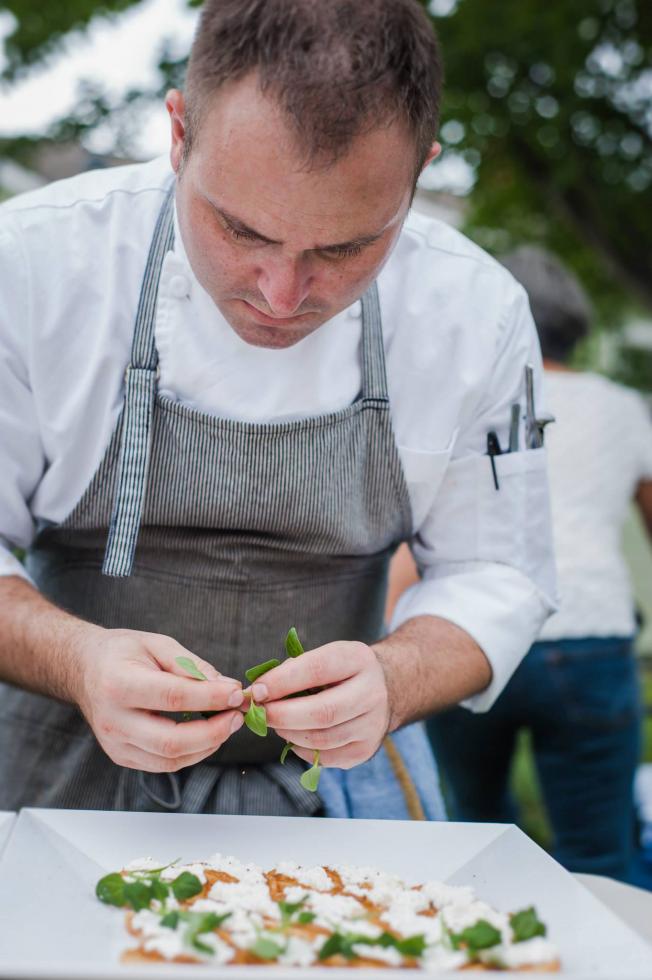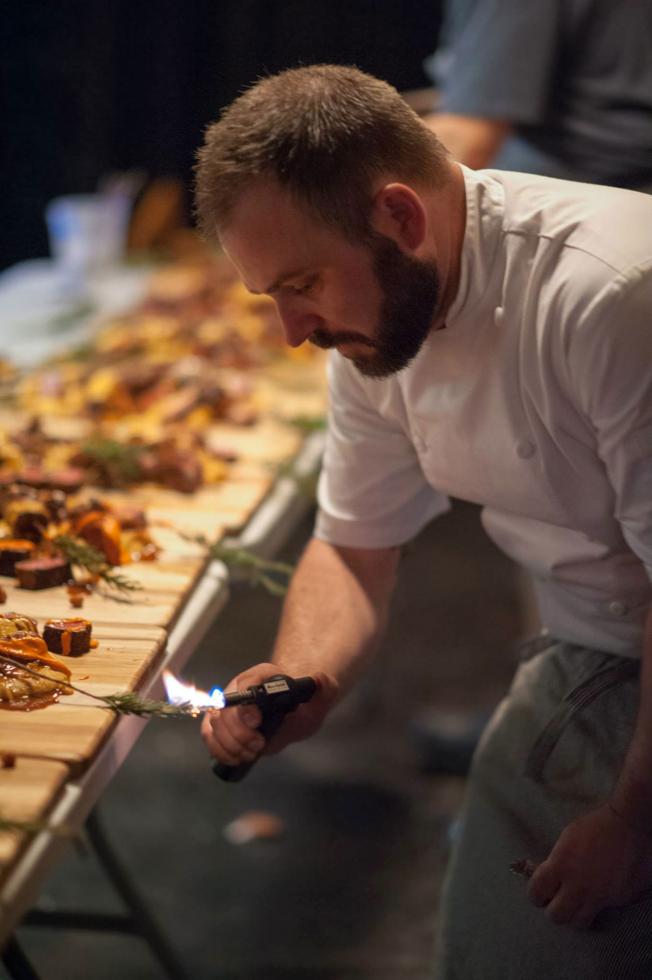When Scott Ostrander heard that Sacramento had declared itself America’s Farm-to-Fork Capital, he was working at Alinea, a 3-Michelin-star restaurant in Chicago. As a Sacramento native and an advocate of food-literacy education, he took the news as a sort of pied-piper call to return to his roots. So in November 2012, he packed up and returned to his first restaurant home, Paragary Restaurant Group, where he had worked alongside the local legend Kurt Spataro for much of his career.
Now that he’s back in America’s Farm-to-Fork Capital, Ostrander’s bigger focus is on finding unique, sustainable ingredients that no one is using.
It’s a lot of fun being a chef in the farm-to-fork capital,” he says. “It’s a great community of people that make amazing products throughout the season. I think we’re on the verge of how we treat land and use the products of nature to shape the cuisine.”
Ostrander didn’t start out in the kitchen. His first restaurant job was as a waiter at Café Bernardo. At the time, Ostrander was in college at Sac State, studying music theory and playing in a punk rock band. He saw waiting tables as “a quick job I could walk away from if I was going on tour,” he says.
But in the restaurant setting, Ostrander’s passion for cooking started to rise. His friends in the kitchen started letting him top pizzas, and then cook them. Eventually, he earned his way onto the kitchen staff.
Back then, Paragary’s had its own restaurant garden. Ostrander remembers picking basil and herbs with Spataro as some of his first farm-to-fork experiences. At the time, he saw blossoming chefs like Ian MacBride (currently of Lucca) taking their culinary careers very seriously.
“I kind of thought if they could do, it I could,” Ostrander recalls. “I kept my head down and worked hard.” Under Spataro, Ostrander learned the fundamental techniques — like making a Caesar dressing — he would need to succeed as a chef.
He eventually earned his way to sous chef at Café Bernardo, and his culinary career in Sacramento started to sizzle. Having grown confident in his skills, Ostrander wanted new challenges and the opportunity to find his own culinary character. He went on to help Adam Pechal open Restaurant Th13een and John Bays open Red Rabbit.
At the time, Sacramento’s culinary scene was awakening with fresh innovation. Local gourmet fish farm, Passmore Ranch had just launched. Purveyors like Sunh Fish were opening shop to bring fresher, more unique offerings to chefs.
Ostrander’s started building his own culinary identity during this period, untethered from someone else’s menu with the freedom to create his own.
“You could do whatever you wanted,” he remembers. “And that’s what we did. We came up with the weirdest thing that you could, like pulling a whole sturgeon off Passmore’s truck and bleeding it to create a dish.”
Yet Ostrander yearned for deeper knowledge and more refined skills. That’s when he landed a prized position at Chicago’s Alinea.
“I was only 29 years old, and I was one of the oldest people in the [Alinea] kitchen,” he laughs. “We had all these young kids in the kitchen going super fast. I decided I had to get fast, and I got faster and better.”
Ostrander paid attention to how the Michelin-starred restaurant’s system ran while also learning an entirely new type of modernist cuisine.
“The food itself was some of the coolest I’ve seen,” he says. “It changed my style a lot.”
Sous viding meats (a modernist technique) stands in a separate category from long-standing traditions like tossing a vinaigrette. This is the space Ostrander recently straddled as head chef of Paragary’s, the newly renovated Sacramentan classic, which he helped re-open. There, he cooked a combination of California cuisine and French bistro with 30 years of Paragary tradition.
He aimed to use lesser-known cuts of meat, like pheasant, quail or tongue. “We have to get away from steak and chicken,” he explains. “That stuff is getting more expensive and using every natural resource we have.”
Yet, Ostrander yearned to stretch even further with his vision of using unique ingredients. He recently accepted the job as executive chef for Inn at Park Winters, a special events facility with its own farm.
Ostrander has nostalgia for those early days in his career, when he picked fresh basil for his menu, but plans to take the concept to all-new levels. He’s excited to work with ingredients that might include cover crops, edible weeds or flowers from herbs that have gone to seed — items often discarded in traditional restaurant kitchens.
“Chefs have ideas that can influence the public,” he says. In fact, Ostrander was among the few Sacramento chefs tapped in January of this year for a policy training conducted by James Beard Foundation’s partner nonprofit, Chefs Action Network. There, chefs learned about working on local advocacy efforts to tackle issues like childhood obesity, hunger, and food literacy. Already, the next stage of Ostrander’s culinary education is taking form.





